One of the basic infrastructures for handling merchandise and ships in all types of ports is port loading and unloading cranes, especially in commercial ports where loading, unloading, loading, and unloading are key actions for the development and operation of these ports.
Port cranes loading and unloading
The cranes are used for loading between the port and the ship, in order to organize and stack it, but also for the stranding of ships, dry storage, ship repair, or auxiliary operations.
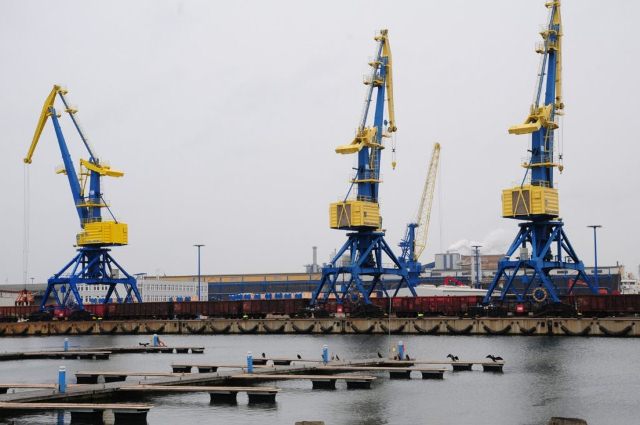
Ship loading cranes
Port Infrastructure
The latter, depending on the activities that must be developed and spaces available, can be installed in different structures (for example, on the upper part of a telescopic gangway of the column and/or tower type).
They are equipped with different accessories or ranges of scope. They can also count on a wide variety of accessories, such as
- winches
- hydraulic handling mechanism
- remote controls
- hoists
- load limiter
- counterweight valve

Types of cranes on ships
Next, we explain the main types of port cranes that exist for loading and unloading merchandise.
Crane Arm
Level-arm cranes or luffing cranes are fixed structures capable of moving the suspended load backward or forwards, while the suspension hook is held at a fixed height automatically.
They are the motorized cranes characteristic of most ports, with a wide variety of uses and where their imposing structures, up to 30 meters, can be seen from several kilometers away.
Rtg Crane
The gantry truck is a structure of gantry type of small dimensions mounted on rails of eight wheels and guided by a cabin mounted on the top intended for loading, unloading and grouped TEU containers in the port and its terminals.
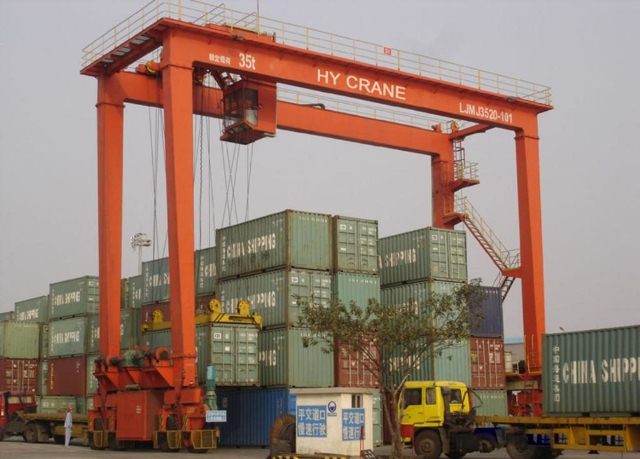
Ship to Shore Crane
Container gantry cranes are also large structures that can reach up to 140 meters in height and more than 20,000 tons of cargo but move along the dock using rails or tires.
It is specialized machinery for loading, unloading, loading and unloading containers, which has four columns and a cantilever on its upper part, where a mobile crane installed in a cart is housed.
There are different measures depending on the cargo capacity and the size of the ships with which it operates, normally starting from the Panamax classification up to the largest ones, named for its cargo limitation for ships that cross the Panama Canal.
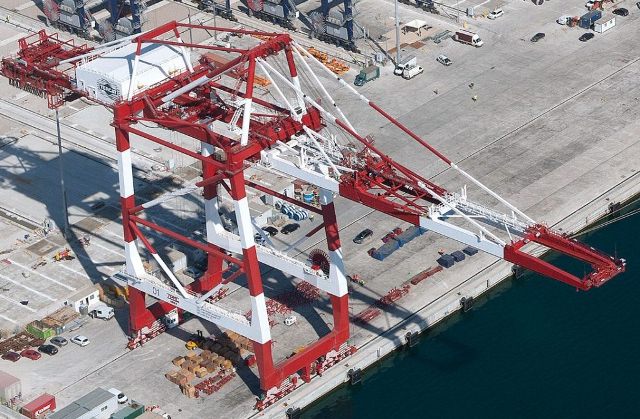
Stacking crane
After the large structures that tend to occupy the line of sight of ports around the world, we find the smallest formats, capable of working in even smaller spaces such as the crane reach stacker or container stacker.
The first of these cranes is the reach stacker crane, also known as a forklift.
It is a type of mobile equipment intended for intermodal loading, where a vehicle equipped with a mechanical arm of different reach and height is capable of transporting, loading, unloading and stacking containers in different terminals of the port.
The most common model is the one that includes the special clamp for the TEU containers, spreader in English, in its upper part, although there is also the model with the clamp on the side of this equipment.

Sidelifter
The sidelifter is a special type of crane for intermodal transport between terminal and trucks, or terminal and rail.
In this machinery, a side lift is incorporated in the semi-trailer or in one of the wagons with four supports for the remote handling of containers.
In this way, they are loaded and unloaded laterally in places where other cranes do not operate.
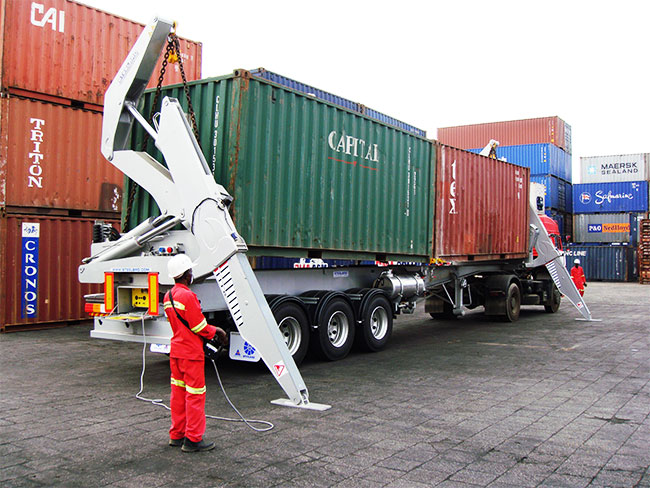
Telescopic crane
The telescopic cranes are fixed structures prepared for the marine environment and intended for auxiliary tasks for the loading, unloading, and stacking of all types of merchandise; They can also be used in maintenance tasks.
They can be mounted both in the terminal itself and in various structures (even taking advantage of the structure of the gangways), with a capacity of 360º rotation and different types and ranges, depending on the application of this machinery.
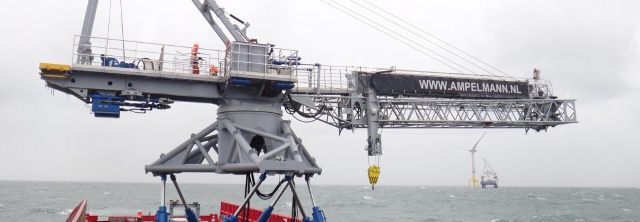
They are cranes that allow configurations with different equipment, such as the remote control for remote handling of the merchandise or indicators such as the safety load limit and overload on the winch, among others.
The provisioning, telescopic cranes for loading and unloading are prepared specifically to withstand the inclemencies of the marine environment.
Depending on the needs, this type of cranes are adapted to the different scopes, safety load limits and counterbalance valves, with radio control (optional), hydraulic drive, etc.
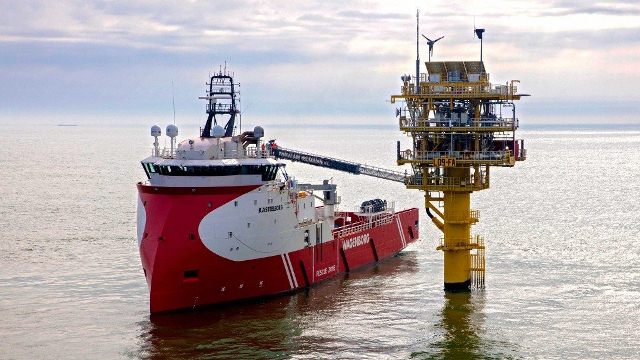
What is deck crane?
A carry deck crane is a small 4 wheel crane with a 360-degree rotating boom housed in the center of the machine. The area above the wheels is a flat deck, ideal for loading and moving materials around a job site.
A crane vessel, crane ship or floating crane is a ship with a crane specialized in lifting heavy loads. The largest crane vessels are used for offshore construction. Conventional monohulls are used, but the largest crane vessels are often catamaran or semi-submersible types as they have increased stability.
Telescopic cranes are another form of heavy cranes employed to transport and maneuver objects from one place to another. Telescopic cranes are mobile in the sense that they transport goods and items in a flexible manner.
A level-luffing crane is a crane mechanism where the hook remains at the same level whilst luffing; moving the jib up and down, so as to move the hook inwards and outwards relative to the base.
The most read
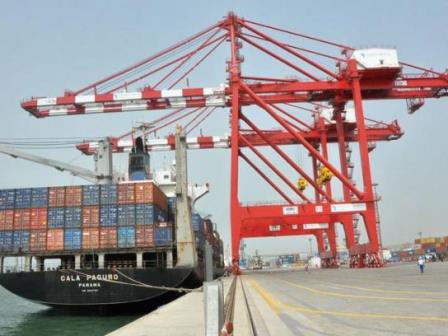
Ship to Shore Crane
The gantry crane or container crane is a typical heavy-duty crane. How do ship-to-shore cranes work? What is a shore crane?
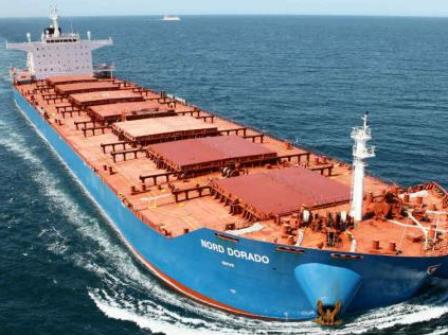
Types of Cargo Ship
The international transport of goods has evolved. In addition to the types of cargo ships, there are currently three types of ships. What are the types of cargo ships? What are the types of container ships?

Super Container Ship
What is the largest container ship in the world?

Types of Sea Ports
A container port or container terminal is a facility where cargo containers are transshipped between different transport vehicles, for onward transportation.
